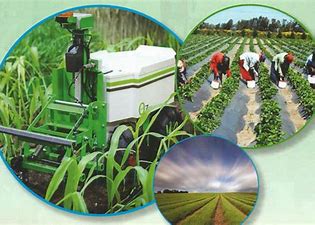Market is heated and grew until May, but a slowdown is expected in the second half of the year
06/17/2022

After falling 31.2% in Brazil between 2010 and 2020, to about 46,000 units, sales of agricultural machinery grew again last year – 26%, to 58,000 units – and are likely to remain strong in 2022, a report by Consultoria Agro Itaú BBA released last week, based on data from the National Federation of Automotive Vehicles Distribution (Fenabrave), shows. But the high costs and interest rates are expected to limit the recovery.
In May, according to Fenabrave, sales increased 35.1% compared to the same month in 2021 and reached 6,100 units, driven by tractors and harvesters. In the first five months of 2022, the total reached 20,200 units, up 36.6% year over year. This increase, Fenabrave said, reflects the increase in producers’ income due to the high prices of commodities and occurs despite the strong increase in inputs such as fertilizers.
Yet, as a large part of the inputs for the 2021/22 harvest was purchased in advance, the farmers’ margins were preserved and even expanded in the season, whose summer harvest has already ended. Hence the still heated demand for new machines, most of them financed with Moderfrota funds, in the first half of the year. Moderfrota, the main investment line of the federal government’s Crop Plan, is expected to finance around R$6 billion in the 2021/22 cycle, which will end on the 30th.
But there is concern among sources in the segment about the behavior of demand in the second half of the year, since, for the 2022/23 harvest, which will begin to be sown in August, the costs will weigh more. The forecast is for a reduction in profit margins in the fields, although operationally the results forecast by banks and consulting firms are still attractive. No “collapse” is expected, but a cooling-off is on the radar.
Driven by the 58,000 agricultural machines sold last year, the sales of the segment reached R$38.3 billion, up 40.3% year over year, according to the Brazilian Association of the Machinery and Equipment Industry (Abimaq). And, according to Abimaq’s forecast taken into account in the study, revenues are expected to total R$40.2 billion this year, up 5%.
The contracting of Moderfrota funds also reinforces the scenario of lower growth. The amount for 2021/22, although in line with the government’s strategy of shifting more funds from large to small and medium farmers, is the smallest in this recent recovery of sales. In the 2019/20 and 2020/21 seasons, when the total amount also included a non-earmarked line from Banco do Brasil, there were R$7.3 billion and R$7.5 billion in credit, respectively. For 2022/23, neither the volume of funds for Moderfrota nor the interest rates – currently at 8.5% per year and expected to rise because the Selic, Brazil’s benchmark interest rate, is higher now – have been defined yet.
As flush farmers are not a Brazilian phenomenon, the country’s agricultural machinery exports, which peaked in the second half of the decade of 2000 and then went into free fall until 2020, also recovered last year. There were $236.6 million in total in 2021, according to data from the National Association of Motor Vehicle Manufacturers (Anfavea), up 23.4% year over year.
According to Anfavea’s data highlighted by Consultoria Agro Itaú BBA, most exports continued to be directed to Argentina ($25.4 million), but the neighboring country was once a much more relevant client. Machinery imports reached $66.9 million in 2021, compared to $83.6 million in 2020, and purchases came mainly from the European Union (28.8% of the total) and the United States (25.7%).
*By Fernando Lopes, Rafael Walendorff — São Paulo, Brasília
Source: Valor International
